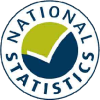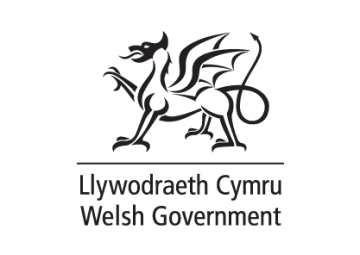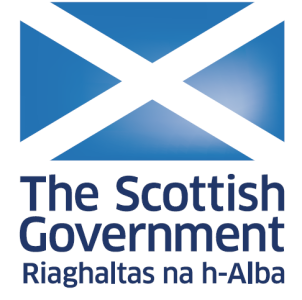Higher Education Student Statistics: UK, 2021/22 - Qualifications achieved
- Summary
- Student numbers and characteristics
- Where students come from and go to study
- Subjects studied
- Qualifications achieved
- Notes
How many HE qualifications were achieved?
- The total number of qualifications achieved in 2021/22 was 919,940. This was an increase of 5% in the number of qualifications achieved in comparison to 2020/21.
- Between 2020/21 and 2021/22, the number of qualifications awarded at postgraduate level increased by 13%. This increase was largely driven by increases in both masters taught and other postgraduate taught qualifications. This trend aligns with the increased uptake of masters students following the introduction of postgraduate loans.
- Relative to 2020/21, the number of qualifications awarded at postgraduate level to students who studied full-time increased by 14%, while those who qualified from a part-time course increased by 9%.
- The number of qualifications awarded in postgraduate research have increased for the first time since 2017/18.
- Between 2017/18 and 2021/22, the number of masters taught qualifications increased by 89,325. Females accounted for 54% of this increase.
- First degree qualifications reported in 2021/22 decreased by 9,325 compared with those in 2020/21. The decrease represents a drop from 51% to 48% as a proportion of all qualifications in 2021/22 and a 10% decrease since 2017/18.
Between 2018/19 and 2019/20 there was a decrease in the number of qualifications, which is largely attributable to a few providers who experienced administrative hold-ups related to the COVID-19 pandemic which began in the 2019/20 academic year. Please see Higher Education Student Statistics: UK, 2020/21 – Notes for more information.
A qualifier is a student who gained a qualification during the academic year in question. This is useful for restricting data to a cohort of graduates. See the qualifications obtained population definitions for more detail.
Figure 15 - HE qualifications obtained by level of qualification
Academic years 2017/18 to 2021/22
Show:
Reset filters | Download table (csv) | Download source data (csv) | About SB265 Figure 15 | Notes
Of those gaining a classified first degree:
- First class honours as a proportion of total qualifications in 2021/22 decreased by 4 percentage points relative to 2021/22.
- In alignment with the decreasing trend at higher attainment levels, males saw a 2 percentage point increase in third class honours/pass qualifications to 5% while females saw a 1 percentage point increase to 4%.
- Full-time students in 2021/22 had fewer first-class honours relative to 2020/21, while part-time students saw an increase in first class honours between 2020/21 and 2021/22.
- There have been changes to overall classification proportions since the COVID-19 pandemic began in the UK. These changes are notable among higher attainment levels in the 2021/22 academic year. To expand upon these changes and identify underlying causes, HESA have again published an insight brief for the 2021/22 academic year as was done last year for 2020/21.
Figure 16 excludes students who qualified with an unclassified degree but these students are included in the total number of first degree qualifiers in Figure 15. In 2021/22, there were 22,195 students who qualified with an unclassified first degree. This mainly includes degrees that don’t have a classification, such as medicine.
Figure 16 - Percentage of first degree qualifiers obtaining each classification
Academic years 2017/18 to 2021/22
Reset filters | Download chart data (csv) | Download source data (csv) | About SB265 Figure 16 | Notes
Figure 17 shows that in 2021/22:
- More qualifications were awarded in business and management than any other subject.
- Among the science subject group, subjects allied to medicine accounted for 26% of all qualifications awarded in 2021/22, while veterinary sciences saw the lowest proportion.
- Of students receiving qualifications in education and teaching, 77% were female while for science subjects, 78% of engineering and technology qualifications were awarded to males.
What if a student studies more than one subject?
Figures in subject tables are Full Person Equivalent (FPE). If a student on a course (an 'instance') studies more than one subject we apportion that instance between those subjects. For example, a student studying ⅔ Business studies and ⅓ French will be counted as 0.67 FPE in Business & administrative studies and 0.33 FPE in Languages.
Figure 17 - HE qualifications obtained by CAH level 1 subject and sex
Academic years 2019/20 to 2021/22
Reset filters | Reset sort | Download table (csv) | Download source data (csv) | About SB265 Figure 17
- From 2019/20 to 2021/22 there have been year-on-year increases in the proportion of qualifications awarded at undergraduate level in science subjects versus those in non-science subjects for students aged 24 and under.
- In 2021/22, both males and females obtaining a postgraduate qualification in science subjects increased by 3 percentage points compared to 2020/21.
- Among qualifiers obtaining a first degree, the proportion qualifying in science subjects increased between 2020/21 and 2021/22 for all known ethnicities.
- There was a 3 percentage point increase in qualifications obtained in science subjects for Black ethnicity students in 2021/22.
Figure 18 - Percentage of HE student qualifications obtained in science subjects by personal characteristics
Academic years 2019/20 to 2021/22
Reset filters | Download table (csv) | Download source data (csv) | About SB265 Figure 18 | Notes

Release date
19 January 2023, 9:30
Coverage
UK
Release frequency
Annual - view all releases (1998/99 onwards)
Themes
Children, education and skills
Issued by
HESA, 95 Promenade, Cheltenham, GL50 1HZ
Press enquiries
+44 (0) 1242 388 513 (option 6), [email protected]
Public enquiries
+44 (0) 1242 388 513 (option 2), [email protected]
Statistician
Rebecca Mantle
Pre-release access
View pre-release access list for this release





